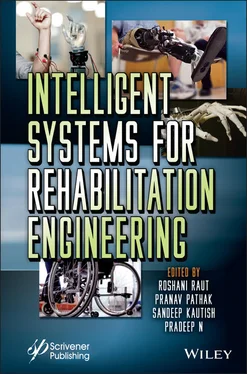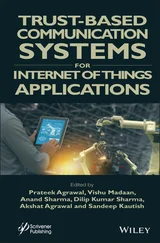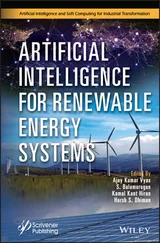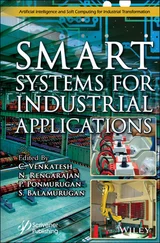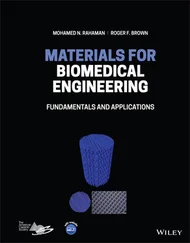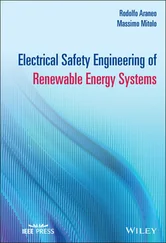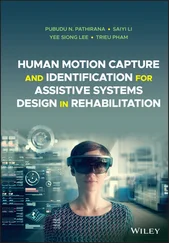Intelligent Systems for Rehabilitation Engineering
Здесь есть возможность читать онлайн «Intelligent Systems for Rehabilitation Engineering» — ознакомительный отрывок электронной книги совершенно бесплатно, а после прочтения отрывка купить полную версию. В некоторых случаях можно слушать аудио, скачать через торрент в формате fb2 и присутствует краткое содержание. Жанр: unrecognised, на английском языке. Описание произведения, (предисловие) а так же отзывы посетителей доступны на портале библиотеки ЛибКат.
- Название:Intelligent Systems for Rehabilitation Engineering
- Автор:
- Жанр:
- Год:неизвестен
- ISBN:нет данных
- Рейтинг книги:4 / 5. Голосов: 1
-
Избранное:Добавить в избранное
- Отзывы:
-
Ваша оценка:
- 80
- 1
- 2
- 3
- 4
- 5
Intelligent Systems for Rehabilitation Engineering: краткое содержание, описание и аннотация
Предлагаем к чтению аннотацию, описание, краткое содержание или предисловие (зависит от того, что написал сам автор книги «Intelligent Systems for Rehabilitation Engineering»). Если вы не нашли необходимую информацию о книге — напишите в комментариях, мы постараемся отыскать её.
Encapsulates different case studies where technology can be used as assistive technology for the physically challenged, visually and hearing impaired.
Audience Intelligent Systems for Rehabilitation Engineering
Intelligent Systems for Rehabilitation Engineering — читать онлайн ознакомительный отрывок
Ниже представлен текст книги, разбитый по страницам. Система сохранения места последней прочитанной страницы, позволяет с удобством читать онлайн бесплатно книгу «Intelligent Systems for Rehabilitation Engineering», без необходимости каждый раз заново искать на чём Вы остановились. Поставьте закладку, и сможете в любой момент перейти на страницу, на которой закончили чтение.
Интервал:
Закладка:
Table of Contents
1 Cover
2 Title Page
3 Copyright
4 Preface
5 1 Different Spheres of Rehabilitation Robotics: A Brief Survey Over the Past Three Decades 1.1 Introduction 1.2 An Overview of Robotics for Medical Applications 1.3 Discussions and Future Scope of Work 1.4 Conclusion References
6 2 Neurorehabilitation Robots Review: Towards a Mechanized Process for Upper Limb 2.1 Introduction 2.2 Recovery and the Robotics 2.3 New Directions to Explore and Open Problems: Aims of the Editorial 2.4 Overview 2.5 Renewal Process 2.6 Neurological Rehabilitation 2.7 State-of-the-Art Healthcare Equipment 2.8 Towards Autonomous Restoration Processes? 2.9 Conclusion References
7 3 Competent and Affordable Rehabilitation Robots for Nervous System Disorders Powered with Dynamic CNN and HMM 3.1 Introduction 3.2 Related Works 3.3 Solutions and Methods for the Rehabilitation Process 3.4 Proposed System 3.5 Analysis of the Data 3.6 Results and Discussion 3.7 Conclusion References
8 4 Smart Sensors for Activity Recognition 4.1 Introduction 4.2 Wearable Biosensors for Activity Recognition 4.3 Smartphones for Activity Recognition 4.4 Machine Learning Techniques 4.5 Other Applications 4.6 Limitations 4.7 Discussion 4.8 Conclusion References
9 5 Use of Assistive Techniques for the Visually Impaired People 5.1 Introduction 5.2 Rehabilitation Procedure 5.3 Development of Applications for Visually Impaired 5.4 Academic Research and Development for Assisting Visually Impaired 5.5 Conclusion References
10 6 IoT-Assisted Smart Device for Blind People 6.1 Introduction 6.2 Literature Survey 6.3 Smart Stick for Blind People 6.4 System Development Requirements 6.5 Features of the Proposed Smart Stick 6.6 Code 6.7 Results 6.8 Conclusion References
11 7 Accessibility in Disability: Revolutionizing Mobile Technology 7.1 Introduction 7.2 Existing Accessibility Features for Mobile App and Devices 7.3 Services Offered by Wireless Service Provider 7.4 Mobile Apps for People With Disabilities 7.5 Technology Giants Providing Services 7.6 Challenges and Opportunities for Technology Giants to Provide Product & Service 7.7 Good Practices for Spreading Awareness 7.8 Conclusion References
12 8 Smart Solar Power–Assisted Wheelchairs For the Handicapped 8.1 Introduction 8.2 Power Source 8.3 Smart EMG-Based Wheelchair Control System 8.4 Smart Navigation Assistance 8.5 Internet of Things (IoT)–Enabled Monitoring 8.6 Future Advancements in Smart Wheelchairs References
13 9 Hand-Talk Assistance: An Application for Hearing and Speech Impaired People 9.1 Introduction 9.2 Related Work 9.3 History and Motivation 9.4 Types of Sensors 9.5 Working of Glove 9.6 Architecture 9.7 Advantages and Applications References
14 10 The Effective Practice of Assistive Technology to Boom Total Communication Among Children With Hearing Impairment in Inclusive Classroom Settings 10.1 Introduction 10.2 Students With Hearing Impairment 10.3 The Classifications on Hearing Impairment 10.4 Inclusion of Hearing-Impaired Students in Inclusive Classrooms 10.5 Total Communication System for Hearing Impairments 10.6 Conclusion References
15 Index
16 End User License Agreement
Guide
1 Cover
2 Table of Contents
3 Title page
4 Copyright
5 Preface
6 Begin Reading
7 Index
8 End User License Agreement
List of Illustrations
1 Chapter 1 Figure 1.1 The architecture of the feed-forward neural network (FFNN) to obtain ... Figure 1.2 Block diagram representation of the intention estimation algorithm. Figure 1.3 The difficulty adjustment in games according to the flow model.
2 Chapter 2 Figure 2.1 Basic rehabilitation process. Figure 2.2 Restoration cycle. Figure 2.3 Robot system: upper limb rehabilitation.Figure 2.4 Automated restoration cycle.
3 Chapter 3Figure 3.1 Components of wrist robot.Figure 3.2 Control room setup.Figure 3.3 Block diagram of proposed methodology for the identification of prope...Figure 3.4 Rehabilitation in case of nerve disorder.Figure 3.5 Remote monitoring and rehabilitation (IoT).
4 Chapter 4Figure 4.1 An overall structure of smart health monitoring systems.Figure 4.2 The smart health monitoring framework.
5 Chapter 5Figure 5.1 The working of Argus II Retinal Implant.
6 Chapter 6Figure 6.1 Structure of artificial neuron.Figure 6.2 Convolution neural network.Figure 6.3 Layers of CNN.Figure 6.4 LSTM structure.Figure 6.5 Block diagram of hardware structure of smart stick.Figure 6.6 Structure of YOLO.Figure 6.7 Object detection results.
7 Chapter 7Figure 7.1 Types of disabilities.Figure 7.2 Accessibility features for mobile app.Figure 7.3 Various services offered by the wireless service provider.Figure 7.4 Mobile apps for person with disability.
8 Chapter 8Figure 8.1 (a) Traditional solar-powered wheelchair with bulky silicon solar pan...Figure 8.2 Basic block diagram of a power circuit in a solar-assisted wheelchair...Figure 8.3 Typical characteristics of a PV module.Figure 8.4 Boost converter MOSFET states, (a) when MOSFET is ON, (b) when MOSFET...Figure 8.5 Amplitude-based myoelectric system control mechanism.Figure 8.6 The block diagram of the EMG-based smart wheelchair control system.Figure 8.7 (a) Surface EMG, (b) Invasive EMG electrodes.Figure 8.8 Overlapping and non-overlapping window.Figure 8.9 Linear and non-linear classifications.Figure 8.10 IoT-enabled wheelchair connected with different modules and central ...
9 Chapter 9Figure 9.1 Alphabets in American sign language.Figure 9.2 Gestures for movements.Figure 9.3 Flex sensors.Figure 9.4 Base flex sensor circuit. which is converted to digital using the dig...Figure 9.5 Arduino microcontroller.Figure 9.6 American sign language symbols.Figure 9.7 Hand gloves.Figure 9.8 Training mode.Figure 9.9 (a) System architecture (basic block of communication).Figure 9.9 (b) System architecture (gloves interfacing with microcontroller).Figure 9.9 (c) System architecture (with pattern matching feature).Figure 9.10 Flow diagram.Figure 9.11 Detection mode.Figure 9.12 Values and signal obtained.
List of Tables
1 Chapter 1 Table 1.1 Summary of certain articles related to the use of robotics for stroke ... Table 1.2 Summary of certain studies which explored smart robotics for rehabilit... Table 1.3 Summary of certain articles on the control and stability analysis. Table 1.4 List of some works done in areas with potential future.
2 Chapter 3Table 3.1 Acceleration value of a healthy test person.Table 3.2 Acceleration value of a Parkinson disease affected person.Table 3.3 EMG value of the arm signal from a normal person.Table 3.4 EMG value of the arm signal from a Parkinson’s disease affected person...Table 3.5 EMG value of the foot signal from a normal person.Table 3.6 EMG value of the foot signal from a Parkinson’s disease affected perso...Table 3.7 EMG value of the thigh signal from a normal person.Table 3.8 EMG EMG value of the thigh signal for Parkinson’s disease affected per...Table 3.9.1 Normal person-left leg.Table 3.9.2 Normal person-right leg.Table 3.10.1 Gait disorder-left leg.Table 3.10.2 Gait disorder-right leg.
3 Chapter 7Table 7.1 Accessibility features for visually impaired.Table 7.2 Accessibility features for deaf.Table 7.3 Accessibility features for cognitive disabilities.Table 7.4 Accessibility features for physically disabled.Table 7.5 Apps for visually impaired.Table 7.6 Apps for the speech and hearing impaired.Table 7.7 Apps for physically disabled.Table 7.8 Apps for cognitive disabilities.
4 Chapter 10Table 10.1 The relevant terms.Table 10.2 Assistive technology devices that are recommended for students with h...
Pages
1 v
2 ii
3 iii
4 iv
5 xiii
Читать дальшеИнтервал:
Закладка:
Похожие книги на «Intelligent Systems for Rehabilitation Engineering»
Представляем Вашему вниманию похожие книги на «Intelligent Systems for Rehabilitation Engineering» списком для выбора. Мы отобрали схожую по названию и смыслу литературу в надежде предоставить читателям больше вариантов отыскать новые, интересные, ещё непрочитанные произведения.
Обсуждение, отзывы о книге «Intelligent Systems for Rehabilitation Engineering» и просто собственные мнения читателей. Оставьте ваши комментарии, напишите, что Вы думаете о произведении, его смысле или главных героях. Укажите что конкретно понравилось, а что нет, и почему Вы так считаете.
